The Bottom Line: Regenerative Businesses Perform Better
I often encounter the question, "How does becoming a regenerative business effect the bottom line?"
The irony of this question is that it is birthed from linear logic, a place of driving business that starts and stops with the numbers. Decisions are siloed in the books. Unfortunately this is the inculturated way of doing business and has led us into a mess of problems socio-economically, environmentally, and psychically that we collectively and unconsciously agree is simply how the world works.
A healthier question might be, "How can becoming a regenerative business improve the overall quality of life of the people who work here, the people we work with, have a net positive social and environmental impact, be more resilient and adaptable to change...and grow a profit.
The good news is that practicing Regeneration addresses all of these issues at once AND grows profit by a wide margin in comparison to non-regenerative businesses.
Sound too good to be true? Let's start with the bottom line.
Living Assets Vs. Non-Living Capital Assets
Jay Bragdon, a money manager, started studying the linkages between stewardship and profitability back in 1972. In the early 1990s his research approach was transformed from the linear thinking processes of traditional corporate analysis to the non-linear (holistic) processes of systems thinking. To assess the viability of this new approach, in 1996 he created a learning lab of corporate LAS exemplars, which later became the Global LAMP Index®.
The Global LAMP Index® (Living Asset Management Performance), tracks bottom line performance of 60 companies that are mimicking nature and place a higher value on living assets (people and Nature) than they do on non-living capital assets. These companies are the LAMP60.
Living Assets Outperform
Over a 20-year period the LAMP60 outperformed by wide margins three commonly used global equity benchmarks: the Morgan Stanley Capital International (MSCI) World Index; the Financial Times Stock Exchange (FTSE) World Index; and the S&P Global 100 Index.
Jay says, "When you step back and think of this approach, it makes sense. Companies are inherently living systems – communities of people with shared goals – living and working at the intersection of biosphere and society. And here is the rub. Within this web of life there resides enormous intelligence, much of which remains untapped. '
Life-mimicking companies tap into this intelligence in two key ways:
- Through mimicking natural processes in the ways they produce goods and services (via industrial ecology); and
- By awakening the spiritual intelligence of employees, which resides in the interconnected neurology of their hearts, brains and guts.
Spiritual intelligence (SQ) is our highest intelligence because it guides our IQ and emotional intelligence (EQ) by investing them with meaning and purpose."
Regenerative Business
What Jay calls "Life-mimicking companies" has now evolved into a practice called "Regenerative Business." A regenerative business takes a holistic, living systems approach to the way it thinks and operates and places the highest value on people and Nature.
The Global LAMP Index showed that when businesses invest in regenerativity, the outcome is increased profit and resilience. Furthermore, there is a wide margin between companies operating from a traditional linear, "bottom-line" perspective than with regenerative companies, which experienced the largest long-term profit margin growth.
The Bottom Line
The Limen Method™ approaches regenerativity by breaking old patterns of logic and inspiring a new capacity for a regenerative logic. By elevating the collective SQ, businesses co-create a new and expansive brand culture that honors the human being holistically. Additionally, by applying a living systems worldview to business, natural processes are embedded into the business products and services thereby creating more harmony with people and Nature.
The bottom line is a more conscious, resilient, and profitable business.
With accelerated advancements in technology combined with increasingly complex global problems, businesses need to loosen their grasp on linear, command and control methods of operating and start investing in becoming regenerative. This way forward not only equips businesses for challenging times, but it also improves the bottom line.
